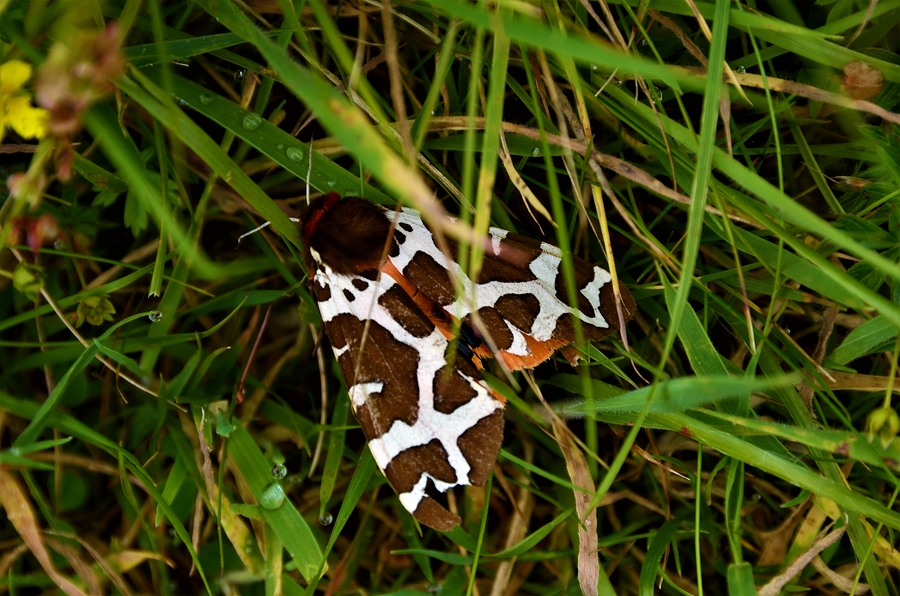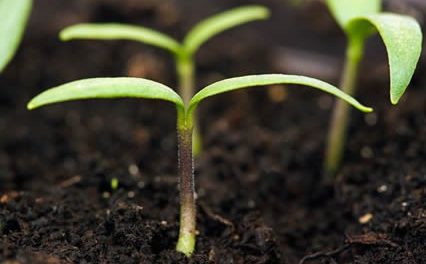(Editor’s Note: Let’s hope last summer was just a fluke. The insects that live in each of our ecosystems have a specific job and help life as we know it, continue. With spring here and summer on its way, I know I’ll be listening for the sound of insects…)
RELATED STORY:
At the end of spring and beginning of summer 2018, Simon Leather, a professor of entomology at Harper Adams University in Shropshire, noticed that the tiger moths he remembered being everywhere when he was younger, were missing. And then he realized he hadn’t really experienced them, to the same extent, in recent years.
“It is an intriguing story and it is likely to be repeated over the next few weeks. The start of summer is the time of year when the nation’s insects should make their presence known by coating countryside windows with their fluttering presence, and splattering themselves on car windscreens. But they are spectacularly failing to do so. Instead they are making themselves newsworthy through their absence. Britain’s insects, it seems, are disappearing.”1
Many entomologists believe we are in the middle of an “insect Armageddon” thanks to a number of environmental impacts like pollution, habitat changes, overuse of pesticides, and global warming. And it is a decline that could have crucial consequences. Although some insects may have unsettling looks, they are a very important and even crucial part of the wildlife food chain. In fact, says, Edward O Wilson, “If all humankind were to disappear, the world would regenerate back to the rich state of equilibrium that existed 10,000 years ago. If insects were to vanish, the environment would collapse into chaos.”1
RELATED STORY:
And we aren’t just crying wolf, the statistics aren’t great:1
- Native ladybird populations are crashing; three-quarters of butterfly species – such as the painted lady and the Glanville fritillary – have dropped significantly in numbers
- Bees, of which there are more than 250 species in the UK, are also suffering major plunges in populations, with great yellow bumblebees, solitary potter flower bees and other species declining steeply in recent years
- Other threatened insects include the New Forest cicada, the tansy beetle and the oil beetle
- The V-moth (Marcaria wauaria) recorded a 99% fall in numbers between 1968 and 2007 and is now threatened with extinction, a fate that has already befallen the orange upperwing, the bordered gothic and the Brighton wainscot in recent years
- The State of the UK’s Butterflies report – produced in 2015 by Butterfly Conservation – provided further evidence of “the serious, long-term and ongoing decline of UK butterflies”. Overall, 76% of the UK’s resident and regular migrant butterfly species had declined in either abundance or occurrence (or both) over the past four decades, it was found. “This is of great concern not just for butterflies but for other wildlife species and the overall state of the environment,” the report noted.
- These insects eat large volumes of slugs and aphids and large numbers of weed seeds, thus helping to stop fields being overrun by unwanted plants and pests. However, a study, published in the Journal of Applied Ecology in 2012 – which looked at 68 beetle species at 11 locations around the British Isles over 15 years – found that three-quarters of those examined had declined in number over the periodOf these, half had fallen at rate equivalent to 30% per decade.
The best illustration of the ecological importance of insects is provided by our birdlife; without insects, hundred of species face starvation and some ornithologists believe this lack of food is already causing serious declines in bird numbers. And last summer, a study by Aberdeen University confirmed that decline.
Insects also play an invaluable role as pollinators to our orchards and fruit fields and as predators and decomposers who control pests and who generally clean up the countryside.
However, perhaps the most alarming indication of the (potentially) impending ecological apocalypse was provided by researchers who published a startling paper in the journal Plos One.
“Their work was based on the efforts of dozens of amateur entomologists in Germany who began employing strictly standardised ways of collecting insects in 1989. They used special tents called malaise traps to capture thousands of samples of insects in flight over dozens of different nature reserves.
Then the weight of the insects caught in each sample was measured and analysed – revealing a remarkable pattern. The annual average weight of insects found in the traps fell by 76% over the 27-year period of their research. Most alarming, however, was the discovery that the decrease was even higher – 82% – in summer, a time when insect numbers should reach their peak.”1
(While meteorological patterns fluctuated during the years of the study, it was clear that weather was not the cause of the declines.)
“But perhaps the most alarming aspect of the research was the realisation that these grim drops in insect numbers were occurring in nature reserves – in other words, in areas where the landscape was highly protected and should be the most friendly of habitats for insects. Conditions elsewhere were likely to be a lot worse, the scientists warned.”1
And what about the overwhelming amount of poisonous pesticides we are using? In particular, neonicotinoid pesticides, which many blame for the drop in bee populations.
“According to research quoted in the journal Science last year, these pesticides have since been found in high concentrations in nectar and pollen in wildflowers near treated fields. Though still not at levels sufficiently high to kill insects directly, they do affect their abilities to navigate and communicate.”1
Many unanswered questions persist. And many potentially frightening realities are coming if we don’t clean up after ourselves and change our ways.
SOURCE:












